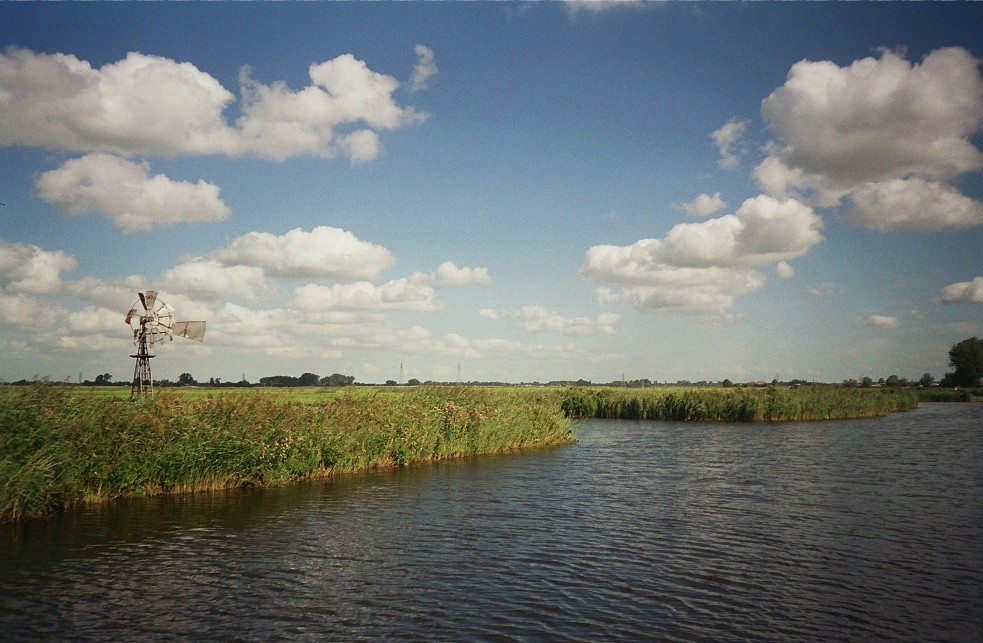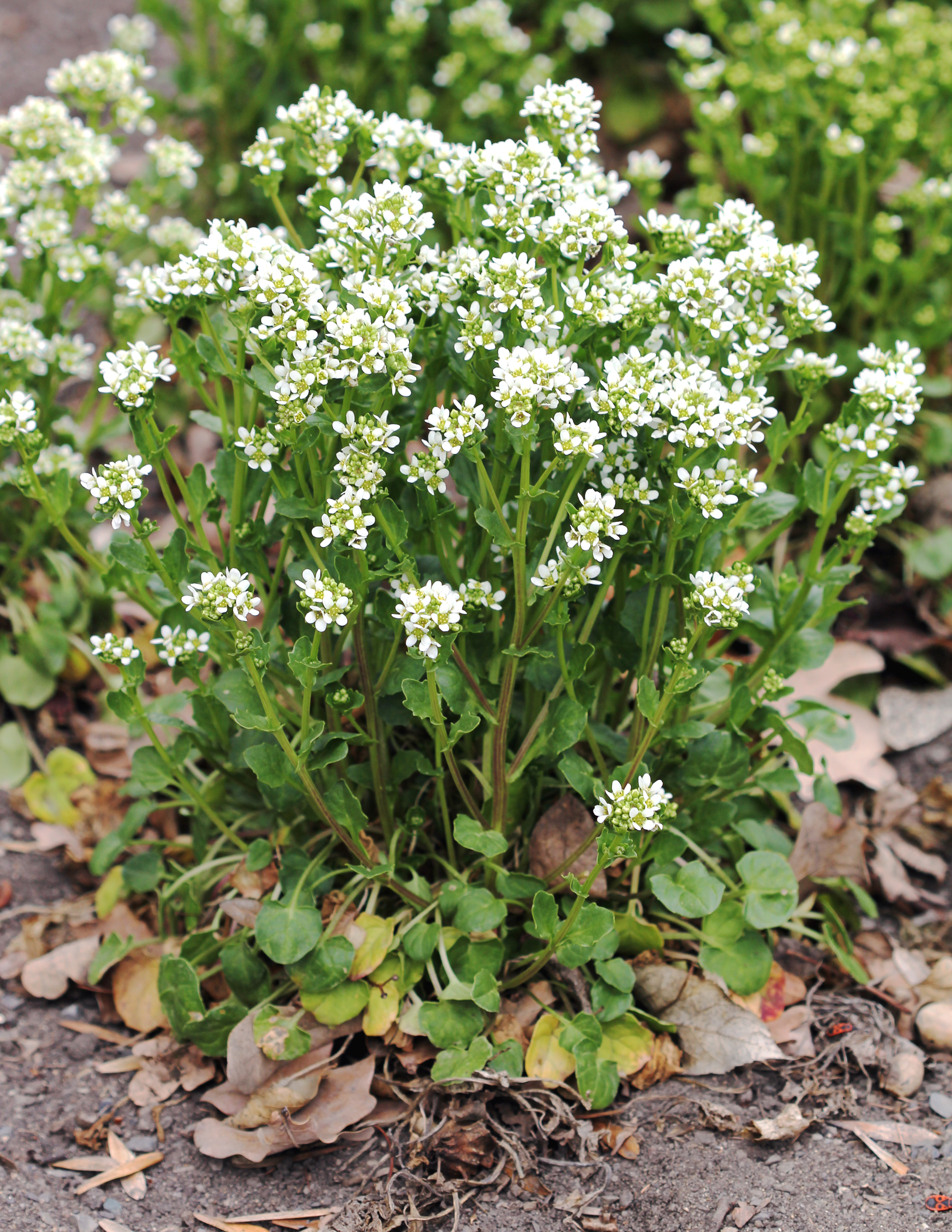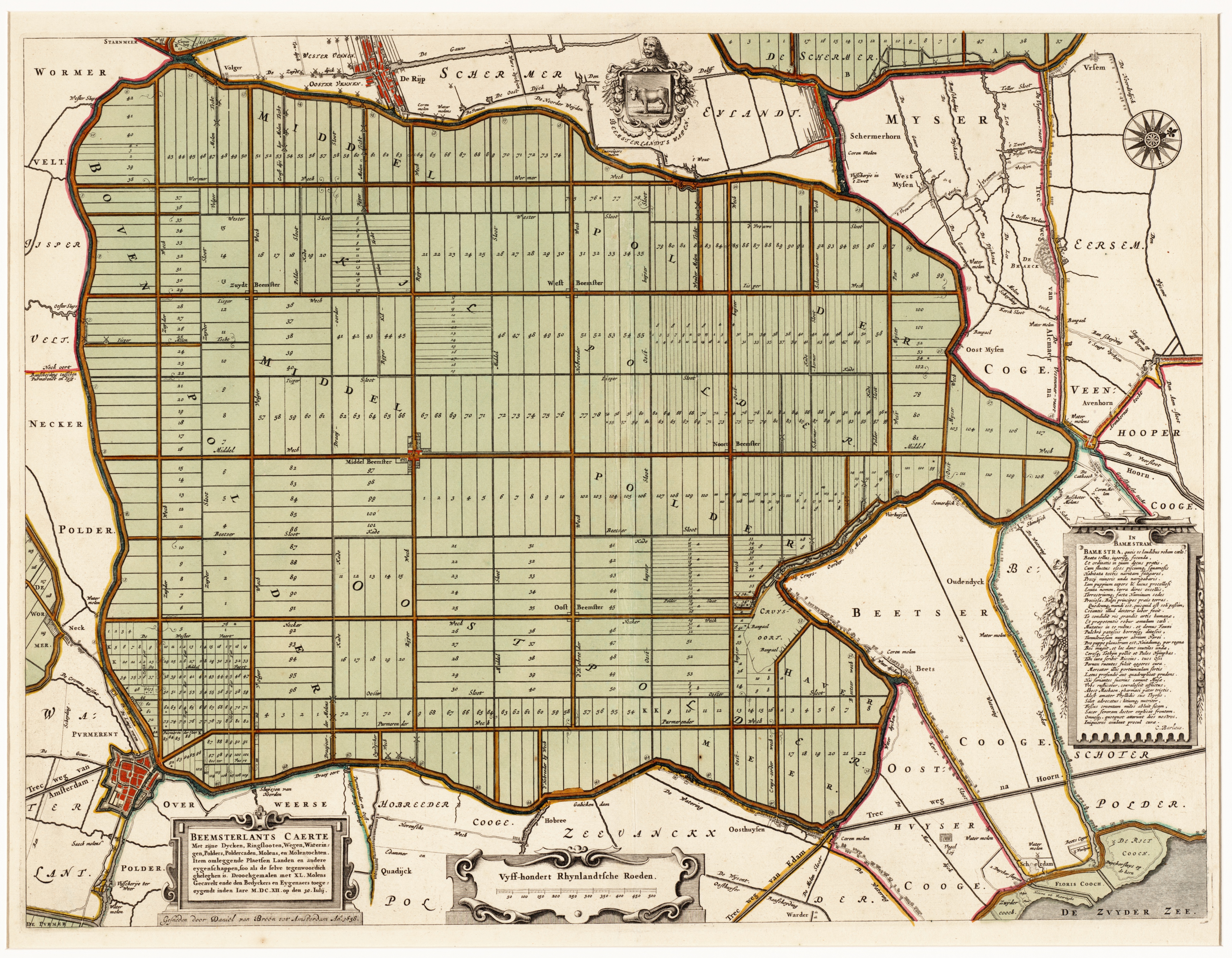|
Wormer- En Jisperveld
The Wormer- en Jisperveld is a nature area, covering 18 km2 (of which 0.7 km2 are a protected area), situated between the towns De Rijp, Purmerend en Wormerveer. The area consists mainly of marshland, grassland and open water. Wildlife The Wormer- en Jisperveld contains nationally important populations of nesting birds as the great bittern, ruff, godwit, gadwall and shoveler. The area is also important for foraging birds as for instance the spoonbill and various species of snipes and harriers. Among the wintering birds there are significant numbers of wigeons and geese. The Wormer- en Jisperveld is also one of the last havens for the unique and rare Dutch subspecies of the tundra vole (''Microtus oeconomus arenicola''). Flora The water and soil of the Wormer- en Jisperveld is brackish. Plants as the marsh fern, marshmallow, common scurvygrass and sundew ''Drosera'', which is commonly known as the sundews, is one of the largest genera of carnivorous plants, ... [...More Info...] [...Related Items...] OR: [Wikipedia] [Google] [Baidu] |
Wormer Jisperveld
Wormer is a town in the Netherlands, Dutch province of North Holland. It is a part of the municipality of Wormerland, and lies about 13 km northwest of Amsterdam. The town is situated in the Zaan district, on the eastern side of the river Zaan, across from Wormerveer. The town is surrounded by the nature area Wormer- en Jisperveld. The village of Oostknollendam, the polder Schaalsmeer (reclaimed in 1631), the polder Enge Wormer (reclaimed in 1634) and a part of the Markerpolder also historically belong to the area of Wormer. Wormer, together with Engewormer (Wormer c.a.), was a separate municipality until 1991, when it became a part of the new municipality of Wormerland. History The inhabitants of Wormer repulsed several attacks of the Frisians and West Frisians in 1280. Floris V, Count of Holland rewarded this with an exemption from paying toll in Holland, an important privilege at that time. Important skirmishes between Spanish troops and the Geuzen took place in Wormer ... [...More Info...] [...Related Items...] OR: [Wikipedia] [Google] [Baidu] |
Spoonbill
Spoonbills are a genus, ''Platalea'', of large, long-legged wading birds. The spoonbills have a global distribution, being found on every continent except Antarctica. The genus name ''Platalea'' derives from Ancient Greek and means "broad", referring to the distinctive shape of the bill. Six species are recognised, which although usually placed in a single genus have sometimes been split into three genera. All spoonbills have large, flat, spatulate bills and feed by wading through shallow water, sweeping the partly opened bill from side to side. The moment any small aquatic creature touches the inside of the bill—an insect, crustacean, or tiny fish—it is snapped shut. Spoonbills generally prefer fresh water to salt but are found in both environments. They need to feed many hours each day. Taxonomy The genus ''Platalea'' was introduced in 1758 by the Swedish naturalist Carl Linnaeus in 1758 in the tenth edition of his ''Systema Naturae''. The genus name is Latin for ... [...More Info...] [...Related Items...] OR: [Wikipedia] [Google] [Baidu] |
Sundew
''Drosera'', which is commonly known as the sundews, is one of the largest genera of carnivorous plants, with at least 194 species. 2 volumes. These members of the family Droseraceae lure, capture, and digest insects using stalked mucilaginous glands covering their leaf surfaces. The insects are used to supplement the poor mineral nutrition of the soil in which the plants grow. Various species, which vary greatly in size and form, are native to every continent except Antarctica.McPherson, S.R. 2008. ''Glistening Carnivores''. Redfern NaturalHistory Productions Ltd., Poole. Charles Darwin performed much of the early research into ''Drosera'', engaging in a long series of experiments with Drosera rotundifolia which were the first to confirm carnivory in plants. In an 1860 letter, Darwin wrote, “…at the present moment, I care more about ''Drosera'' than the origin of all the species in the world.” Both the botanical name (from the Greek δρόσος: ''drosos'' = "dew, dew ... [...More Info...] [...Related Items...] OR: [Wikipedia] [Google] [Baidu] |
Common Scurvygrass
''Cochlearia officinalis'', common scurvygrass, scurvy-grass, or spoonwort, is a species of flowering plant in the family Brassicaceae. The plant acquired its common name from the observation that it cured scurvy, and it was taken on board ships in dried bundles or distilled extracts. Its very bitter taste was usually disguised with herbs and spices; however, this did not prevent scurvygrass drinks and sandwiches becoming a popular fad in the UK until the middle of the nineteenth century, when citrus fruits became more readily available. Description ''Cochlearia officinalis'' is a biennial/ perennial, growing to . The stems are hairless and long stalked with fleshy leaves. The leaves are heart or kidney shaped, the lower stems leaves form a rosette around the base of the plant. It is in flower from May to August, they are small, and come in white or lilac, with four daisy-like petals. The seeds ripen from July to September, they are globe shaped. The small, round seeds are ... [...More Info...] [...Related Items...] OR: [Wikipedia] [Google] [Baidu] |
Marshmallow
Marshmallow (, ) is a type of confectionery that is typically made from sugar, water and gelatin whipped to a solid-but-soft consistency. It is used as a filling in baking or normally molded into shapes and coated with corn starch. The sugar confection is inspired by a historical medicinal confection made from ''Althaea officinalis'', the marsh-mallow plant. History The word "marshmallow" comes from the mallow plant species (''Althaea officinalis''), a herb native to parts of Europe, North Africa, and Asia which grows in marshes and other damp areas. The plant's stem and leaves are fleshy, and its white flower has five petals. It is not known exactly when marshmallows were invented, but their history goes back as early as . Ancient Egyptians were said to be the first to make and use the root of the plant to soothe coughs and sore throats and to heal wounds. The first marshmallows were prepared by boiling pieces of root pulp with honey until thick. Once thickened, the mixtur ... [...More Info...] [...Related Items...] OR: [Wikipedia] [Google] [Baidu] |
Marsh Fern
''Thelypteris palustris'', the marsh fern, or eastern marsh fern, is a species of fern native to eastern North America and across Eurasia. It prefers to grow in marshy situations in full sun. The species epithet An epithet (, ), also byname, is a descriptive term (word or phrase) known for accompanying or occurring in place of a name and having entered common usage. It has various shades of meaning when applied to seemingly real or fictitious people, di ... ''palustris'' is Latin for "of the marsh" and indicates its common habitat. It is the only known host plant for '' Fagitana littera'', the marsh fern moth.Pocketguide to Eastern Wetlands By T. Travis, Shanda Brown p.57, 2014 Subtaxa The following subspecies are accepted: *''Thelypteris palustris'' subsp. ''palustris'' *''Thelypteris palustris'' subsp. ''pubescens'' References Thelypteridaceae Ferns of the Americas Ferns of Asia Ferns of Europe Flora of Asia Flora of Europe Plants described in 1821 {{Pol ... [...More Info...] [...Related Items...] OR: [Wikipedia] [Google] [Baidu] |
Tundra Vole
The tundra vole (''Microtus oeconomus'') or root vole is a medium-sized vole found in Northern and Central Europe, Asia, and northwestern North America, including Alaska and northwestern Canada. In the western part of the Netherlands, the tundra vole is a relict from the ice age and has developed into the subspecies ''Microtus oeconomus arenicola''. Description The tundra vole has short ears and a short tail. Its fur is yellowish brown with paler sides and white underparts. It is typically about long with a tail and a weight of about . Habitat The tundra vole is found in damp tundra or moist meadows, usually near water. Behaviour and diet This species makes runways through the surface growth in warm weather and tunnels through the snow in winter. It feeds on grasses, sedges and seeds. It is active year-round. It also digs burrows where it stores seeds and roots, especially licorice root, for the winter. The species epithet ''oeconomus'' refers to this "economical" behaviour. Br ... [...More Info...] [...Related Items...] OR: [Wikipedia] [Google] [Baidu] |
Wigeon
The wigeons or widgeons are a group of birds, dabbling ducks currently classified in the genus ''Mareca'' along with two other species. There are three extant species of wigeon, in addition to one recently extinct species. Biology There are three extant species: the Eurasian wigeon (''Mareca penelope''), the American wigeon (''M. americana'') and the Chiloé wigeon (''M. sibilatrix''). A fourth species, the Amsterdam wigeon (''Mareca marecula''), became extinct in the 19th century. The wigeons' closest relatives, forming with them the genus ''Mareca'', are the gadwall and the falcated duck. All three wigeons are similarly shaped, with a steep forehead and bulbous rear to the head. Males have a distinctive breeding plumage, in their eclipse plumage Plumage ( "feather") is a layer of feathers that covers a bird and the pattern, colour, and arrangement of those feathers. The pattern and colours of plumage differ between species and subspecies and may vary with age classes. ... [...More Info...] [...Related Items...] OR: [Wikipedia] [Google] [Baidu] |
Shoveler
The shovelers or shovellers are four species of dabbling ducks with long, broad spatula-shaped beaks: * Red shoveler, ''Anas platalea'' * Cape shoveler, ''Anas smithii'' * Australasian shoveler, ''Anas rhynchotis'' * Northern shoveler, ''Anas clypeata'' References *Clements, James, (2007''The Clements Checklist of the Birds of the World'' Cornell University Press The Cornell University Press is the university press of Cornell University; currently housed in Sage House, the former residence of Henry William Sage. It was first established in 1869, making it the first university publishing enterprise in th ..., Ithaca {{Animal common name Ducks Birds by common name ... [...More Info...] [...Related Items...] OR: [Wikipedia] [Google] [Baidu] |
De Rijp
De Rijp is a village and former island in the Dutch province of North Holland. It is a part of the municipality of Alkmaar, and lies about 10 km northwest of Purmerend, between the Schermer and the Beemster polders. Before the poldering of the lakes surrounding it, De Rijp was famous for its herring industry. Today it is known for its characteristic rijksmonuments, which include some of the oldest wooden houses of North Holland. De Rijp was a separate municipality until 1970, when it merged with Graft. The statistical area "De Rijp", which also can include the surrounding countryside, has a population of around 4020.Statistics Netherlands (CBS)''Statline: Kerncijfers wijken en buurten 2003-2005''. As of 1 January 2005. History Before the lakes on either side of De Rijp were pumped dry, De Rijp was a port town with merchant ships that travelled the high seas on trade routes. The town had a medium-sized herring fleet, and searched for whales with larger ships. Rijper vess ... [...More Info...] [...Related Items...] OR: [Wikipedia] [Google] [Baidu] |
Gadwall
The gadwall (''Mareca strepera'') is a common and widespread dabbling duck in the family Anatidae. Taxonomy The gadwall was first described by Carl Linnaeus in his landmark 1758 10th edition of ''Systema Naturae''. DNA studies have shown that it is a sister species with the falcated duck; the two are closely related to the three species of wigeons, and all of them have been assigned to the genus ''Mareca''. There are two subspecies: * ''M. s. strepera'', the common gadwall, described by Linnaeus, is the nominate subspecies. * ''M. s. couesi'', Coues's gadwall, extinct 1874, was formerly found only on Teraina, a coral atoll in the Pacific Ocean. The specific name ''strepera'' is Late Latin for "noisy". The etymology of the word ''gadwall'' is not known, but the name has been in use since 1666. Description The gadwall is long with a wingspan. The male is slightly larger than the female, weighing on average against her . The breeding male is patterned grey, with a black re ... [...More Info...] [...Related Items...] OR: [Wikipedia] [Google] [Baidu] |
Godwit
The godwits are a group of large, long-billed, long-legged and strongly migratory waders of the bird genus ''Limosa''. Their long bills allow them to probe deeply in the sand for aquatic worms and molluscs. In their winter range, they flock together where food is plentiful. They frequent tidal shorelines, breeding in northern climates in summer and migrating south in winter. A female bar-tailed godwit made a flight of 29,000 km (18,000 mi), flying of it without stopping. In 2020 a male bar-tailed godwit flew about non-stop in its migration from Alaska to New Zealand, previously a record for avian non-stop flight. In October 2022, a 5 month old, male bar-tailed godwit was tracked from Alaska to Tasmania, a trip that took 11 days, and recorded a non-stop flight of . The godwits can be distinguished from the curlews by their straight or slightly upturned bills, and from the dowitchers by their longer legs. The winter plumages are fairly drab, but three species have r ... [...More Info...] [...Related Items...] OR: [Wikipedia] [Google] [Baidu] |





_female_and_male_dabbling.jpg)
